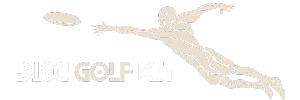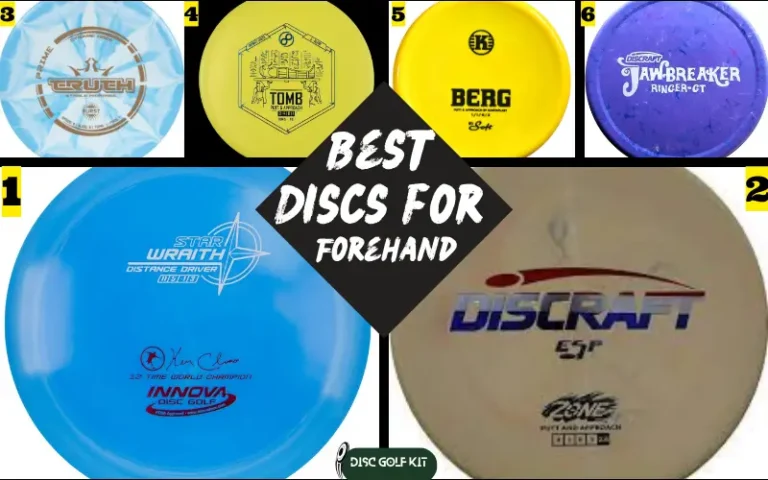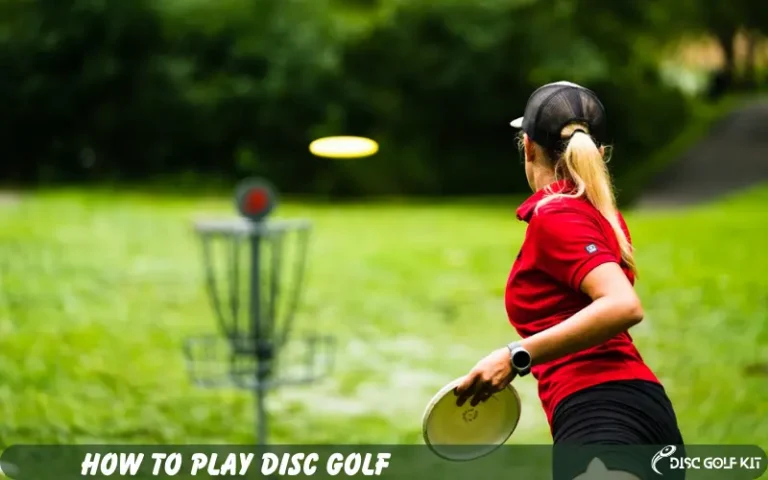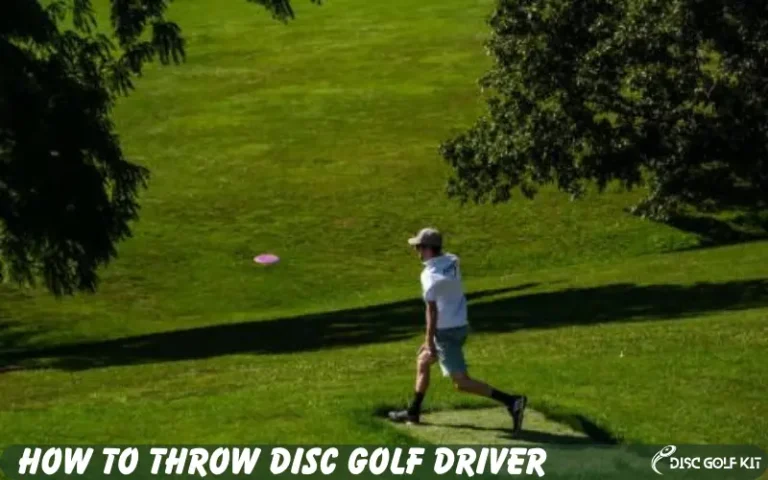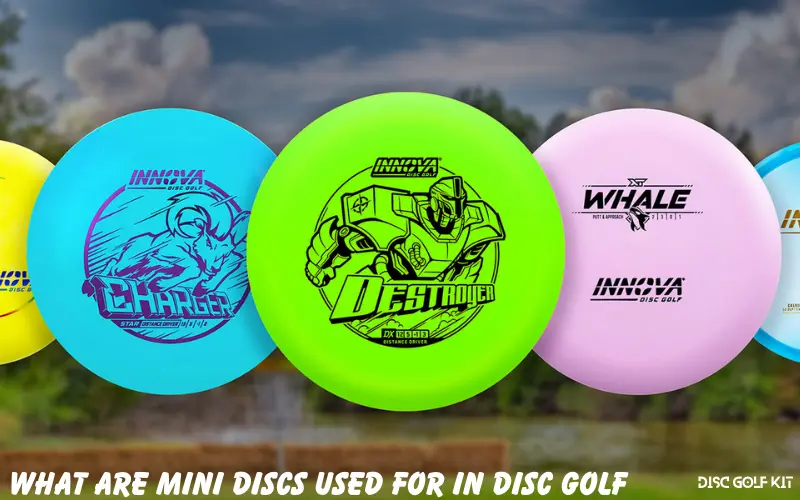
The importance of using mini discs for marking in professional games can’t be overstated. Accurate marking ensures a fair game and eliminates disputes about where a player should be throwing from next. It’s not just a cute accessory; it’s an integral part of the game that ensures fair play and adds a level of strategy and skill.
Did you know that disc golf is one of the fastest-growing sports in the world, with more than 8,000 courses across 40 countries? Amidst all the excitement, there’s a term and an item that often causes bewilderment, especially for beginners: mini discs. What are mini discs used for in disc golf, you might wonder? Don’t fret; this article aims to shed light on the intriguing world of disc golf terms, particularly focusing on the role and significance of mini discs.
Whether you’re a novice eager to learn or an experienced player looking to brush up on your knowledge, we’ve got you covered. We will dive deep into why mini discs are not just a cute accessory but a fundamental aspect of the game, how they contribute to fair play, and other surprising uses that you might not have considered. Buckle up as we explore the multifaceted world of disc golf terms, starting with the fascinating subject of mini discs!
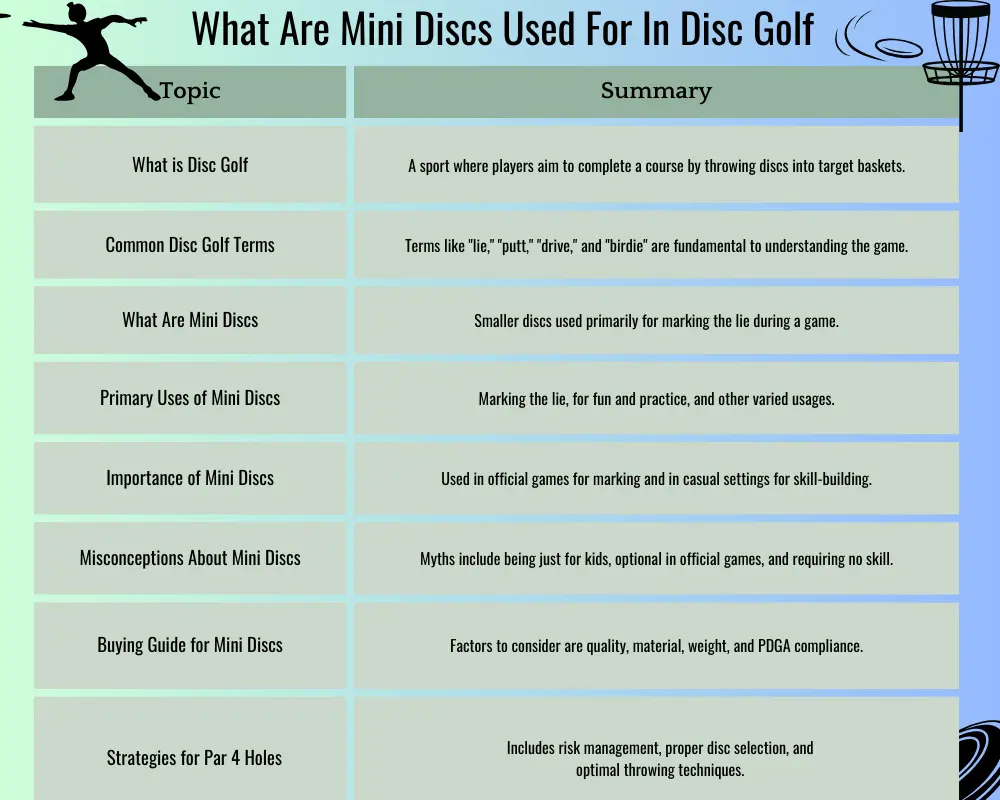
The Basics of Disc Golf
If you’re new to the world of disc golf, think of it as the marriage of traditional golf and frisbee. The objective is simple: get your disc into a series of baskets or targets in as few throws as possible. Instead of swinging a club to hit a golf ball, you’re using your arms to throw a disc. The game generally takes place on a course with 9 or 18 “holes,” much like a standard golf course, but instead of holes, there are metal baskets.
Now, onto some common disc golf terms that every player should know:
Knowing these terms not only helps you understand the game better but also elevates your experience and interaction with other players. The beauty of disc golf is in its accessibility, but a little bit of jargon never hurt anyone, right?
The Importance of Understanding Disc Golf Terms
You might be thinking, “Why do I need to know all these terms? I’m just here to have a good time.” While it’s true that you can enjoy disc golf without delving into its terminology, understanding the lingo has several advantages, whether you’re a beginner or an experienced player.
Benefit for Beginners and Experienced Players
For disc golf beginners, knowing the terms can significantly speed up your learning curve. You’ll be able to understand the rules faster, communicate more effectively with other players, and get more out of any lessons or tutorials you might take. For experienced players, the terminology becomes second nature, but it also lets you strategize more efficiently. Knowing exactly what is being discussed allows you to think several moves ahead, much like chess, and can make a difference in competitive play.
Impact on Game and Strategy
Consider this: You’re on the fairway, and another player mentions, “You should consider a hyzer throw for a better lie.” If you’re unfamiliar with the terms “hyzer” or “lie,” you might miss an opportunity to position yourself better for the next throw. Understanding disc golf terms equips you with the knowledge to make informed decisions that could potentially improve your game strategy. It helps you understand why you’re making certain moves, which in turn allows you to play the game more efficiently and enjoyably.
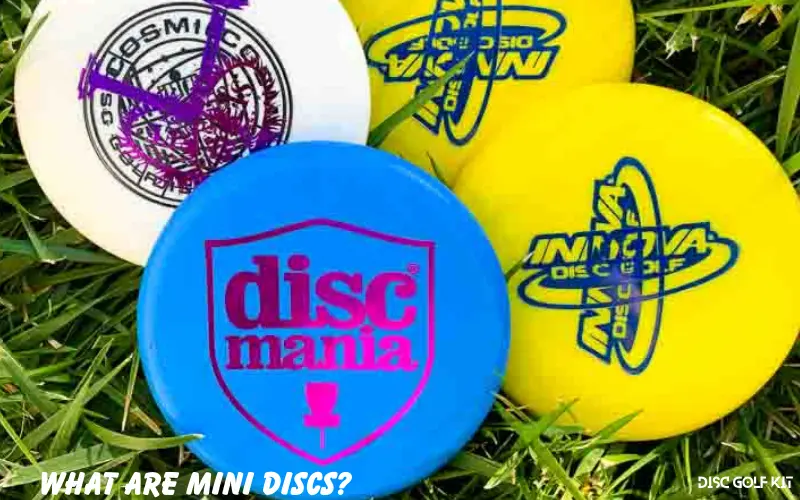
What Are Mini Discs?
As you delve deeper into the world of disc golf, you’re bound to encounter something that might look a little puzzling at first glance: mini discs. Unlike their larger counterparts, these compact discs are generally about half the size, ranging from 3 to 4 inches in diameter. But don’t be fooled by their petite dimensions. In disc golf, mini discs serve specific and often crucial functions that can impact your game.
Difference from Regular Discs
At first sight, mini discs are much smaller than the standard discs used for throwing. Standard discs are usually about 8 to 9 inches in diameter and come in different types, such as drivers, mid-range discs, and putters. Each serves a particular purpose, from covering long distances to making precise throws into the basket. On the other hand, mini discs are not categorized into types based on their throwing capabilities because they serve a different purpose altogether.
Disc Golf Mini Discs
In the realm of disc golf, mini discs are predominantly used as markers to indicate where your regular disc landed—known as the “lie”—providing a reference point for your next throw. While you might occasionally see players using them recreationally for fun tosses, their primary function is far from recreational. In professional and even amateur play, using a mini disc to mark your lie is not just a choice; it’s a rule that ensures fair and consistent play.
What Are Mini Discs Used For In Disc Golf
While mini discs may seem like a mere accessory or a fun-sized version of the standard disc, they serve critical functions within the game. Here’s a breakdown of the What Are Mini Discs Used For In Disc Golf.
Marking Your Lie
The most crucial role of a mini disc is to mark your lie during a game. After your standard disc comes to a halt, you’ll place the mini disc directly in front of it, establishing a clear and accurate reference point for your next throw. This process ensures that all players abide by the same rules and makes the game fair and competitive. It’s such an integral part of the game that failing to mark your lie correctly can result in penalties in official tournaments.
For Fun and Practice
Besides the serious business of marking lies, mini discs can also be used for lighter purposes. Many players enjoy using them for short-distance throws, practicing their grip, or even engaging in a casual game of mini-disc golf. While they might not cover the same distances as regular discs, they can still offer a fun and unique experience. Some people also use them to practice their putting skills by aiming at smaller targets, thereby honing their precision.
Other Usages
Believe it or not, the uses of mini discs extend beyond the game itself. They’ve become popular collectibles, with many players trading and showcasing various designs and editions. Additionally, some players use them as trophies or keepsakes, commemorating special events, tournaments, or personal achievements in the sport.
Uses of Mini Discs
Understanding the diverse uses of mini discs enhances your appreciation for this seemingly simple object. Whether it’s maintaining the integrity of the game or offering a different kind of fun, mini discs serve multiple purposes that enrich the overall disc golf experience.

Why Do People Use Mini Discs for Marking?
The use of mini discs for marking lies might seem like a small detail, but it’s an element that holds great significance, especially in professional games. Let’s delve into why mini discs are the go-to tool for this purpose and how the rules of the game govern them.
Importance in Professional Games
In a sport where every inch and angle can make a difference, the use of mini discs for marking provides a standardized way to ensure fair play. In professional games, where stakes are high, and margins are slim, having an accurate reference point for each throw becomes critical. Misplacing your lie, even by a few inches, could disadvantage or unfairly advantage a player, altering the course of the game. Hence, using mini discs for marking lies is not just recommended but is often mandated in official rules.
Rules Surrounding Their Use
The Professional Disc Golf Association (PDGA) provides explicit guidelines concerning the use of mini discs for marking. According to PDGA rules, a mini marker disc must be used to mark the lie for each throw after the tee shot. The mini disc is placed directly in front of the thrown disc’s position along the line of play, and the next throw must be made from behind the marking disc. Failure to mark the lie accurately can result in a penalty, affecting your score and, ultimately, your standing in the game.
Mini Discs for Marking in Disc Golf
Given the weightage of their role in marking lies, mini discs are not an afterthought but an integral component in disc golf. Whether you’re competing at a high level or playing a friendly match, understanding the rules surrounding mini discs for marking becomes essential for anyone serious about the game. Their use standardizes play, ensures fairness, and, when you get down to it, keeps the spirit of competition alive and well.
Additional Roles of Mini Discs
While mini discs primarily serve as lie markers in standard disc golf games, their usefulness doesn’t stop there. From becoming coveted collectibles to aiding in skill-building, mini discs have carved out additional roles in the disc golf universe.
Collectibles
One of the more unexpected yet delightful roles that mini discs have adopted is that of collectibles. Many players take great pride in accumulating a range of mini discs, each with unique designs, limited-edition stamps, or even autographs from professional disc golf players. These collections not only serve as mementos but also add a touch of personality and individuality to your disc golf gear.
Mini Disc Golf Games
Did you know you can play a mini version of disc golf, too? Yes, mini-disc golf is a thing! Utilizing the same principles as standard disc golf but on a smaller scale, mini disc golf games are quick, fun, and can be played almost anywhere. Whether it’s your backyard, a local park, or even indoors, all you need are some mini discs and targets, and you’re good to go!
Skill-Building
Aside from their use in official games and casual play, mini discs also offer a platform for skill-building. Their smaller size necessitates greater control and precision, making them excellent tools for practicing your grip and throwing techniques. Some players use them for putting practice, as landing a mini disc in a small target can dramatically improve your accuracy when switching back to standard-sized discs.
Additional Uses of Mini Discs in Disc Golf
So, whether you’re a collector, someone who enjoys a quicker version of the game, or a player keen on honing specific skills, mini discs offer a multitude of additional uses in disc golf. While they may be small, their impact on the game and its community is anything but.
This wraps up our comprehensive look at mini discs, their primary uses, and additional roles in the world of disc golf. The next time you see one of these compact discs, you’ll understand just how versatile and indispensable they are to the sport.
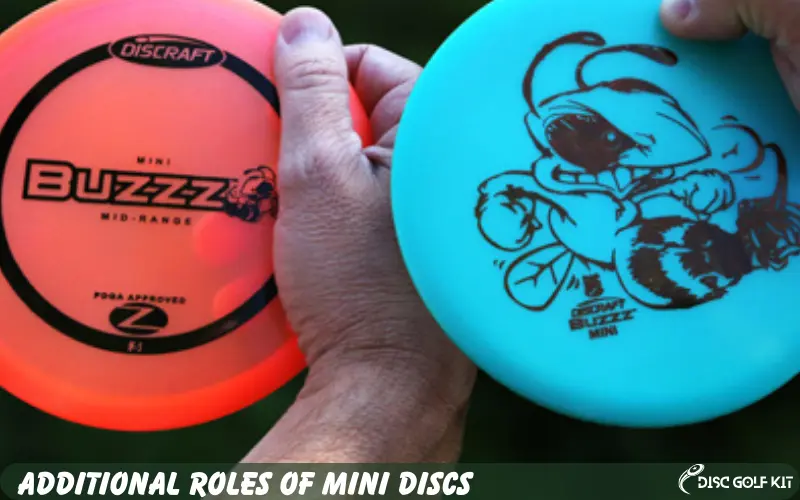
Common Misconceptions About Mini Discs
In any sport with a unique set of tools and rules, misconceptions are bound to arise, and disc golf is no exception. When it comes to mini discs, several myths and misunderstandings exist, often causing confusion among beginners and even some seasoned players. Let’s clear the air and address some of these misconceptions.
Just for Kids or Novices
One common misconception is that mini discs are only for children or beginners. While their size might suggest a less serious form of the game, we’ve seen that they serve specific and important functions in official play. Experienced players and professionals rely on them to mark lies, and their usage is embedded in official disc golf rules.
Optional in Official Games
Another myth surrounding mini discs is that their use in marking lies is optional during official games. As discussed earlier, the Professional Disc Golf Association (PDGA) mandates the use of mini discs for this purpose to ensure fair play. Ignoring this rule could lead to penalties, affecting your standing in a competitive match.
No Skill Required
Because of their small size, people often assume that using a mini disc requires no skill. This couldn’t be further from the truth. The precision required to use them effectively, especially in the context of mini-disc golf games or skill-building exercises, can be quite challenging and rewarding.
Merely Decorative
Lastly, some people view mini discs as merely decorative items or collectibles without any practical use in the game. While it’s true that many players collect them, their primary function as lie markers in official and casual play is indispensable.
Misconceptions About Mini Discs in Disc Golf
Understanding the misconceptions about mini discs in disc golf is crucial for appreciating their multifaceted role in the game. They’re not just kid’s toys, optional accessories, or skill-less gadgets; they’re essential tools that add layers of strategy, fairness, and even fun to the sport.
Where to Buy Mini Discs and What to Look For
So, you’re convinced of the importance of mini discs and now want to get your hands on some. But where should you start? What factors should you consider when making a purchase? Let’s guide you through the process with some practical advice.
Tips for Purchasing Mini Discs
What Makes a Quality Mini Disc

Conclusion
We’ve taken a deep dive into the world of mini discs, exploring their various roles and significance in the realm of disc golf. From their primary function as lie markers to their additional uses as collectibles, skill-building tools, and even elements of mini-disc golf games, these compact discs serve a multitude of purposes. Along the way, we’ve debunked common myths and misconceptions about mini discs, highlighting their importance in both casual and professional settings.
In a game as nuanced and strategic as disc golf, understanding the terms and tools of the trade is invaluable. Mini discs are more than just small, colorful accessories; they’re integral to fair play, skill development, and even the sport’s culture. So, whether you’re a beginner or a seasoned player, enhancing your understanding of disc golf terms and incorporating mini discs into your gameplay can only elevate your experience.
We hope this comprehensive look into mini discs and their varied roles has offered you valuable insights. As you continue your journey in disc golf, consider integrating mini discs into your practice and perhaps even starting your collection. They may be small, but their impact on the game is anything but.
Frequently Asked Questions

Written by
Declan Hodgson
Meet Declan Hodgson, your disc golf sherpa at DiscGolfKit.com. Navigating the twists and turns of the sport, I’m here to guide you through the world of discs, gear, and the pursuit of that perfect throw.
